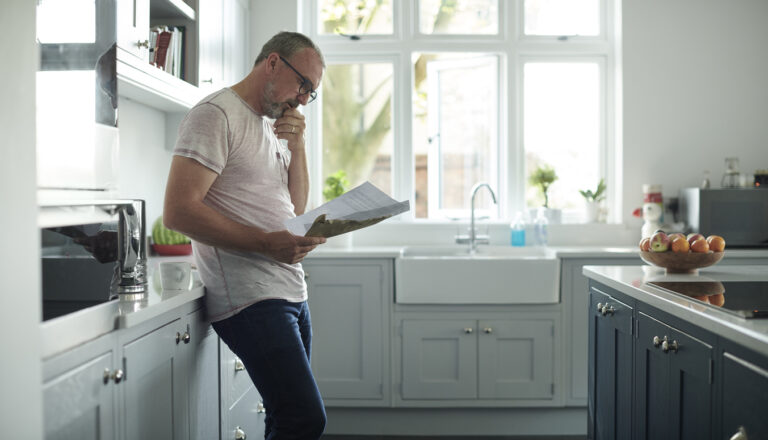Key takeaways:
- Using funds from a home equity line of credit (HELOC) is an option for some homeowners to settle their Unlock home equity agreement (HEA).
- Homeowners who have used their HEA funds to improve their financial position may qualify for a HELOC on favorable terms.
Before you entered into your home equity agreement (HEA), chances are good that you also considered some other options to access your home equity – and that one of those was a home equity line of credit (HELOC). Since you opted for the HEA, you might wonder how you could use a HELOC to settle your HEA.
Some homeowners can indeed use a HELOC to settle, or end, their HEA. Even though a HELOC may not have been the right choice for you previously, it could be a good financial move now. Here, we’ll look at how that would work, with pros and cons.
How settling with a HELOC works
Many HEA customers end their HEA and settle with their HEA provider when they sell their home. A HELOC could be a potential option for those who wish to settle and not sell their home.
To do this with a HELOC, you would use the funds you obtain from the line of credit to buy out your equity and end your HEA. Then you would be left with the HELOC to repay, according to its terms.
As you consider this option, it’s important to understand just how a HELOC works. Similar in some ways to a credit card, your lender would extend you a line of credit. You can then draw from that line (take out cash) up to your limit, as you need, during what’s called the draw period. The length of this period will vary by lender but is often between five and 10 years. Payments may be interest-only during the draw period.
If you are looking to use a HELOC for your HEA settlement, you might take out large sums at the beginning of your HELOC draw period (again, according to the limits your lender sets). After the draw period ends, you can no longer take out cash. You then make monthly payments to repay both the principal and interest during the repayment period, which can last anywhere from 10 to 30 years.
While some fixed-rate HELOCs are now available, most HELOCs are variable-rate, which means that the rate – and by extension, your monthly payment – can vary over the life of the loan.
Qualification
Unlike an HEA, a HELOC is a loan. That means you will need to qualify based on the basis of your credit score, your debt-to-income (DTI) ratio and your home’s loan-to-value (LTV) ratio.
- Credit. Every lender has its own criteria, but most will require a credit score of 620 or higher to qualify for a HELOC. Some may even require scores of 680 or higher. Beyond just qualifying for the loan, the lowest interest rates will go to borrowers with the highest credit scores. Often, homeowners who used their HEA funds to pay down credit card and other high-interest debt have improved their credit scores significantly and find that they now can qualify for an HELOC at a favorable rate.
- DTI. This is a determination of how much of your monthly income goes to debt payments. To calculate, total your monthly debt payments and divide by your gross monthly income. Multiple the result by 100 to obtain a percent. Again, every lender will differ, but most require a DTI ratio of no higher than 43%.
- LTV. This ratio compares the loan balance you carry on your home against the value of your home. To calculate, divide your current mortgage loan balance by your home’s market value. (You can find your loan balance on your monthly mortgage statement or in your account online.) Multiply by 100 to obtain a percent. Lenders usually like to see an LTV of 80% or less, though, again, it varies by lender. Some may consider borrowers with higher ratios.
If you can qualify for a HELOC, at terms favorable for you, using the proceeds to settle your HEA may be a good option. But, as with any financial decision, there are pros and cons to consider.
Pros
- Equity use. Depending on the lender, you can often borrow 80-85% of your home’s value, less what you owe on it. If your home has benefitted from the rise in market values over the last several years, this could be a substantial amount.
- Flexibility. You can borrow on an as-needed basis.
- Interest rates. Typically, interest rates on HELOCs will be lower than those on credit cards or personal loans, though a bit higher than current mortgage rates. Rates on fixed-rate HELOCs will be higher than those on variable-rate loans, but you gain the advantage of the rate – and monthly payments – staying stable. This can be particularly helpful if interest rates are expected to rise, or in an uncertain economy.
- Long repayment timeline. As mentioned above, the repayment period can be 10, 20 or even 30 years long.
Cons
- Added debt. A HELOC is a loan, so you are adding debt and a monthly payment. You need to have a solid budget in place and know that it can support making all payments.
- Temptation to draw more than you need. It can be tempting to use any funds “left over” after settling your HEA for purchases you don’t really need and haven’t budgeted for repayment.
- Qualification. As explained, you must be able to qualify for a HELOC based on your credit, DTI ratio and LTV ratio.
- Interest rates. If you have a variable-rate HELOC, the rate will be subject to change, based on market conditions, throughout the term. Borrowers must carefully consider if their financial situation and budget can handle this variability.
- Balloon payment. Many HELOCs come with a balloon payment, which is the repayment of the entire balance at the end of the designated repayment period.
- Collateral. The HELOC uses your home as collateral. That means if you miss payments, you run the risk of foreclosure and losing your home.
The HEA buyout process
When you are ready to buy back your equity from Unlock – in full or in part – a few things take place.
- Request. If you are interested in buying back your equity in your Unlock HEA through a cash-out refinance, the first step will be to contact Unlock and make the request. Itt’s important to do this at least 45 days in advance of your anticipated HELOC closing date.
- Unlock Share. To determine how much you’ll pay to Unlock, you can consult your account dashboard or contact our Customer Success team.
- Determination of home improvement value. As a partner in homeownership, Unlock designed its HEA to be supportive of home improvements, so we do not share in value created by improvements you’ve made at your expense. If you have made substantial home improvements, you can apply to Unlock for an improvement adjustment.
- Appraisal. Conducted by an independent appraiser in your state, the appraisal will provide the basis for your “ending home value.” Unlock will then subtract the improvement adjustment, if any, from the appraisal number.
- Property inspection. If the appraisal indicates major concerns about the property’s condition, Unlock may require an independent property inspection. If warranted, a maintenance adjustment will be applied for the cost of necessary repairs. Just as home improvements can reduce your ending home value, a maintenance adjustment can increase it.
By taking the ending home value, subtracting the value of improvements and adding in any needed maintenance adjustment, we arrive at the amount on which we’ll receive our percentage share, as specified in your agreement.
- Settlement statement. Unlock will provide you – and your lender’s escrow company upon request – a settlement statement, payoff request and documents needed to release its lien on the property.
- Closing. The escrow company will pay Unlock its share of proceeds, ending the HEA.
Making the decision
You can exit your HEA at any time during your 10-year term. Whether you decide to settle when you sell your home or before, a HELOC may present an option to generate the funds needed. If you are considering a HELOC, be sure to carefully evaluate the pros and cons for your particular situation.



